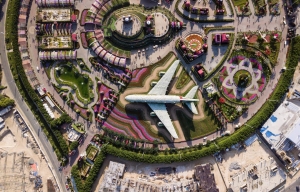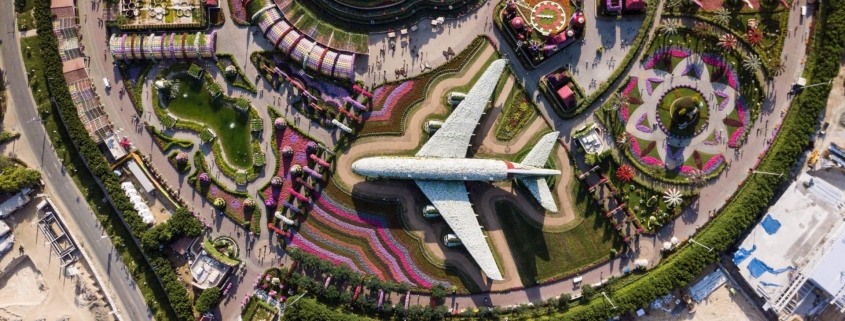For those passionate about aviation, 2020 has been a roller-coaster of emotions. The year started off with seemingly unlimited opportunities for the aviation industry. But within few weeks, due to the spreading of COVID-19, airlines all over the world started to ground aircraft, until reaching a never-before standstill of flights in April and May. Airlines started filing for bankruptcy and retiring iconic aircrafts such as the 747-400, while hoping to recover fast and go back to normal as soon as possible. On the other hand, as aviation was already committed to become a more sustainable industry, many saw this disruption as an opportunity to speed up such transition.
In a recent interview discussing the impact of the COVID-19 emergency on the aviation sector, Michel Peters, CEO at Royal NLR, mentions how recovery goes hand in hand with greater attention to the sustainability objectives. He states that NLR will therefore be helping the sector to achieve these longer-term objectives for climate-neutral aviation, with the ultimate aim of making flying completely ‘circular’ (closed-cycle) and not burdening the environment.
Michel is not the only one claiming that the recovery following the COVID-19 emergency will need to go hand in hand with meeting environmental and sustainable development goals. In June, a joint statement has been signed by politicians and CEOs of several worldwide companies and published by the Financial Times which supports the claim that circular economy would be fundamental to the recovery of post-COVID-19. Aviation will join many other industries (from food and fashion, to civil construction and furniture) that plan to turn to circular economy to recover from the current economic downfall.
But how can circular economy be beneficial to many different industries in their post COVID-19 recovery? And what lessons can the aviation industry learn from circular economy, not only to recover but, more fundamentally, to transform into a sustainable aviation?
“Circular economy leads to resilient environments”
Circular economy’s principles of reduce, reuse, and recycle can easily be associated to a strategy towards a more sustainable way of working, but they also have proven to lead to more resilient and flexible environments. Circular economy considers waste and end-of-life products as a resource, which reduces the dependency on import of raw materials or on remotely located supply chains. This circular economy enables local economies to operate in a self-sufficient way, while connecting them to a larger, global network. Products can be manufactured locally, with local, renewable or second-stream resources. By encouraging reuse and repair solutions, the need or request for new products are reduced, which translates in less impact on personal economic situations. By supporting and favouring local employment, fewer jobs are at risk, in case of lockdown or international travel ban. By producing locally, being able of repurposing local resource or products, and introducing new ownership models, markets could react more promptly to specific and constantly changing demands, by generating more availability of the (temporarily) needed products.
 The aviation industry has grown into a worldwide, interconnected entity, where aircraft are assembled out of components manufactured in different countries across the globe. Though this supports national economies all around the world, it means the supply chain can be susceptible of interruptions when import/export trade has to be suspended. Also the aviation sector depends on massif infrastructures (airports) and expensive and incredibly optimised, single purpose vehicles (airplanes).
The aviation industry has grown into a worldwide, interconnected entity, where aircraft are assembled out of components manufactured in different countries across the globe. Though this supports national economies all around the world, it means the supply chain can be susceptible of interruptions when import/export trade has to be suspended. Also the aviation sector depends on massif infrastructures (airports) and expensive and incredibly optimised, single purpose vehicles (airplanes).
By transitioning to local, on demand production, the aviation industry could absorb the economic downturn by adjusting aviation-specific production as requested and enabling to transition more smoothly to different products. Applying design for disassembly and modularity concepts could help to repurpose airports and aircraft depending on actual needs; modular concepts would allow adjusting assets for different number of passengers, different health restrictions, or purpose, for example, enabling a simpler turnover from passenger into cargo. Modularity could help to reuse the materials and resources embedded in them. At an OEM level, aircraft manufactures are suffering the consequences of airlines bankrupting or delaying taking delivery of freshly produced vehicles. By designing and manufacturing aircraft in a more circular way, unsold aircraft could be easily dismantled, with components destined to different products, or reconfigured and simply sold to different airlines. Modularity can also lead to a reduction in time and cost for maintenance, repair and overhaul activities.
“Circularity as a full value-return on investment to feed a local market”
A consequence of the decline in air traffic and passenger numbers is that airlines have been forced to retire older and less efficient aircraft types to reduce costs; retired aircraft are taken apart, with valuable components sold as spare parts (for example engines). Unfortunately currently only a minimal part of the entire aircraft ends up in a second hand market, due to strict regulations and limited demand. Selling scrap parts for recycling the material simply does not generate enough return. With a more circular approach and the integration of aviation into a circular ecosystem, access to the resources of retired aircraft could provide a full return on investment, and such resources could feed a local market. As the expectations are that there will be no return to previous traffic numbers for many years to come, the airport infrastructure will also suffer from overcapacity for some time to come, leading to costs for the airport. By building airports in a circular, modular way, the sections of airports not used could be disassembled and moved where needed. Airports also will need alternatives to passenger-related revenues; incorporating the airports with their surrounding communities and infrastructures in so-called “Airport cities” is seen as a possible solution. If this Airport City were to be built with circularity principles in mind, this transformation could generate several opportunities for all stakeholders involved.
Circularity principles can generate their maximum impact, in terms of environment impact and economic profit, if applied from the earliest stage of product development. Therefore introducing such principles in the design of new aircraft and airports would be the ideal situation. Nonetheless much can be done on existing assets, to minimise the environmental impact of abandoned airplanes wrecks and disused airport buildings.And creating the mind-set for the aviation industry to embrace a transition to circularity business models, not only in favour of an environmental agenda, but because such new models open new opportunities for business.
About the author
 Ligeia Paletti works at Royal NLR’s Aerospace Vehicles Division. She is a passionate aeronautical engineer with a strong background in structural analysis and structural integrity. Ligeia is deeply committed to making aviation more sustainable, with the dream of making the first circular aircraft fly. Setting up NLR’s Circular Economy Team is a great start to achieve that! Check NLR Circular Economy capabilities. Questions? If you have any questions about this blog post, please feel free to contact Ligeia by email at Ligeia.Paletti@nlr.nl or +31 885 11 43 61
Ligeia Paletti works at Royal NLR’s Aerospace Vehicles Division. She is a passionate aeronautical engineer with a strong background in structural analysis and structural integrity. Ligeia is deeply committed to making aviation more sustainable, with the dream of making the first circular aircraft fly. Setting up NLR’s Circular Economy Team is a great start to achieve that! Check NLR Circular Economy capabilities. Questions? If you have any questions about this blog post, please feel free to contact Ligeia by email at Ligeia.Paletti@nlr.nl or +31 885 11 43 61

